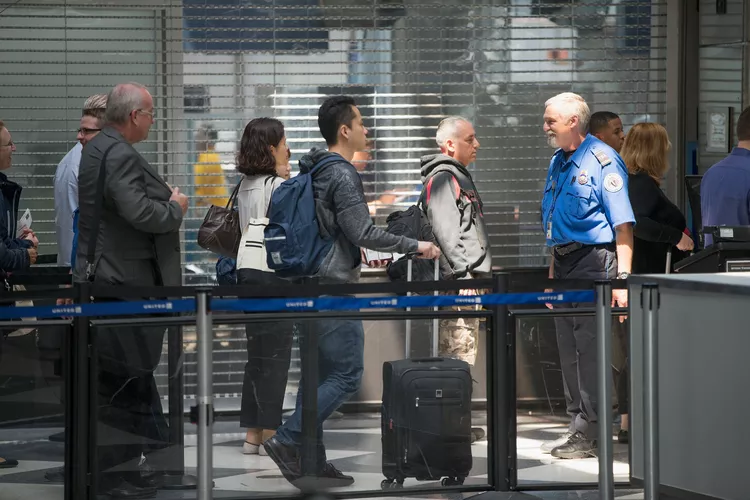Summary of Airport Security Tips
Organize Your Bags to Speed Up the Airport Security Screening Process
Getting through airport security can indeed be a frustrating and time-consuming process. By the time you wait in line, hand over your ID, bundle your possessions into a plastic bin, and walk through the metal detector, you may already feel fatigued from traveling. However, while you cannot avoid going through airport security screening, there are several strategies you can employ to expedite the process smoothly.
Pack Properly
Ensure you check TSA regulations to determine which items are appropriate for checked baggage—such as knives—and which should remain in your carry-on. Additionally, it’s wise to review your airline’s policies, as checked baggage fees and rules may have changed since your last journey. Consequently, always leave prohibited items at home. Furthermore, avoid placing valuable items like cameras or jewelry in checked baggage; always carry your prescription drugs with you.
Organize Tickets and Travel Documents
It is crucial to carry a government-issued photo ID, such as a driver’s license, passport, or military ID card, to the airport. Ensure your ID displays your name, date of birth, gender, and an expiration date. Moreover, place your tickets and ID in an easily accessible spot. Tip: Always bring a passport for international flights.
Prepare Your Carry-On Items
In the U.S., you are permitted to bring one carry-on bag and one personal item—typically a laptop, purse, or briefcase—into the passenger compartment with most airlines. However, discount airlines like Spirit often enforce stricter rules. Remove all sharp items, such as knives and scissors, from your carry-on luggage. Furthermore, all liquid, gel, and aerosol items must fit into one quart-sized, clear plastic bag with a zip-top closure, ensuring that no single item exceeds 3.4 ounces (100 milliliters). Additionally, keep in mind that while you may bring unlimited powdered substances onto the plane, TSA screeners may conduct additional checks on any powder.
Pack Your Medications
Importantly, medications are exempt from the 3.4 ounces / 100-milliliter limit. However, you must inform the TSA screeners that you are carrying medication and present it for inspection. For ease of processing, pack your medications together. In the event you use an insulin pump or another medical device, ensure you declare it at the checkpoint. Always place medications in your carry-on bag. Never carry medications in your checked luggage.
Prep Your Laptop
As you approach the metal detector, be prepared to remove your laptop from its bag and place it in a separate plastic bin, unless it is in a special “checkpoint friendly” bag that only contains your laptop.
Ban the Bling
While dressing up for travel is acceptable, nearly any large metal object can trigger the detector. Therefore, pack items like belts with large buckles, flashy bracelets, or spare change in your carry-on bag instead of wearing them.
Dress for Success
If you have body piercings, consider removing your jewelry prior to proceeding with the airport screening process. Wearing slip-on shoes allows for quick removal. Don’t forget to wear socks to protect your feet from the airport floor. Furthermore, be ready to undergo a pat-down screening if your clothing is loose-fitting or if you wear head coverings that could conceal prohibited items. Limit your clothing layers; while two or three layers are acceptable, avoid excessive layers like five pairs of pants. Tip: Passengers over 75 are not required to remove their shoes or light jackets.
Get Ready for Special Screenings
Travelers using wheelchairs or other mobility aids should still expect to go through the security checkpoint. TSA screeners will inspect these devices physically. Smaller mobility aids, like walkers, need to go through the X-ray machine. If you utilize a prosthetic limb or medical device, such as an insulin pump or ostomy bag, communicate this to the TSA screener. You may undergo a wand inspection or pat-down but will not need to remove your medical device. Be prepared to request a private inspection if necessary. Familiarize yourself with TSA rules and processes for screening passengers with medical conditions and disabilities to understand what to expect during your screening.
Bring Your Common Sense
Approaching the airport screening process with a positive attitude and common sense can improve your experience significantly. Stay alert while placing carry-on items into plastic bins and as you pick up your belongings. Thieves often target security checkpoints, aiming to exploit the chaos during the screening process. Therefore, it is wise to repack your laptop and organize your carry-on bag before putting on your shoes so you can keep track of your valuables. Additionally, being courteous can lead to better service; cheerful travelers often receive more assistance. Finally, avoid making any jokes about bombs or firearms, as TSA officials take such comments very seriously.
Consider TSA PreCheck®
The TSA’s PreCheck® program provides an opportunity to skip certain security procedures, such as shoe removal, by submitting your personal information ahead of time. To apply for this service, you need to complete an online application, then visit a PreCheck® office to pay the nonrefundable fee (currently $85 for five years) and submit your fingerprints—there’s no guarantee of application approval. Nevertheless, if you travel frequently, using the PreCheck® line can save you considerable time and reduce stress, making it a worthwhile option to explore.




